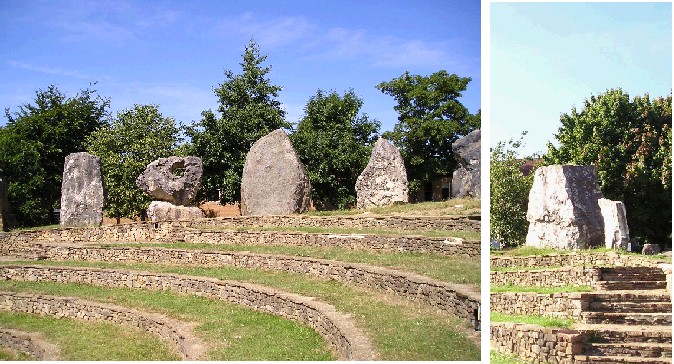As an idea, ECOS caught the attention and support of Foster Yeoman, the quarrying company which, as employer, has much to do with the people of Frome. Their public relations officer was sent to quarrying companies in the twelve countries which were members of the European Union. There was a rare expression of unity between stone firms who agreed to supply a sample rock. Haulage firms connected with the stone trade also made an important contribution with the experience and equipment to transport large and unusual loads from the ports to the site in Frome. On site, special cranes and foundation-fixing firms were persuaded, or paid, to take care of safe mounting and setting of stones weighing possibly up to 30 tonnes. Altogether, it became a combined operation of near-wartime planning and execution.
The celebration opening took place in 1992 and it was stated ‘Provision can be made to introduce further monliths from other countries as and when they join the European Community’. Part of the ECOS community scheme was the involvement of parties of school children from the donating countries and many came for the opening celebrations.
In 2002, when the enlargement of the European Community was announced, it was hoped that this might bring further contributions from the new member states. It didn't happen in that way and the amphitheatre was completed with a screen of Holm Oak trees which seems a divergence from the stated aim of 1992.
In 2004, a further example of Portland Stone was added to the overall plan for ECOS when the sculptor, Barry Cooper, fashioned a massive carving of a Holm Oak leaf from another 4m block. This was set alongside eleven oak saplings to signify ‘The Tree of Life’. The worked surfaces of this rock, as opposed to the natural surfaces of the originally mounted UK Portland Stone monolith, allow study of smooth worked surfaces and reveal the wealth of shell debris which this high energy limestone represents.

